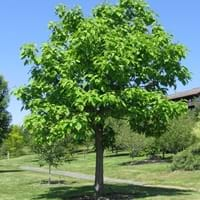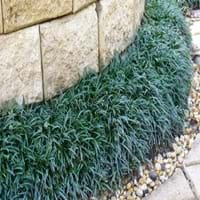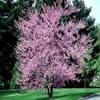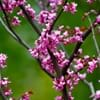Life Span
Perennial
Perennial
Origin
United States, Southeastern United States, Central United States
Japan
Types
not available
Not Available
Habitat
Moist woods, Swamps, Woodlands
Damp shady woods, foothill woods, Lowland
USDA Hardiness Zone
4-8
6-11
Sunset Zone
2a, 2b, 3a, 3b, 4, 5, 6, 7, 8, 9, 10, 11, 12, 13, 14, 15, 16, 17, 18, 19, 20, 21, 22, 23, 24
H1, H2, 5, 6, 7, 8, 9, 14, 15, 16, 17, 18, 19, 20, 21, 22, 23, 24
Habit
Spreading
Clump-Forming
Flower Color
White, Yellow, Purple
White, Lavender
Flower Color Modifier
Bicolor
Bicolor
Fruit Color
Green, Brown
Indigo, Dark Blue, Black
Leaf Color in Spring
Light Green
Dark Green
Leaf Color in Summer
Light Green
Dark Green
Leaf Color in Fall
Yellow green, Brown
Dark Green
Leaf Color in Winter
Not Available
Light Green
Leaf Shape
Heart-shaped
Grass like
Plant Season
Spring, Summer, Fall
Spring, Summer, Fall, Winter
Sunlight
Full Sun, Partial Sun, Partial shade
Full Sun, Partial Sun, Partial shade
Type of Soil
Clay, Loam
Loam
The pH of Soil
Acidic, Neutral, Alkaline
Acidic, Neutral
Soil Drainage
Well drained
Well drained
Bloom Time
Spring
Late Spring, Early Summer, Summer
Tolerances
Wet Site, Drought
Drought
Where to Plant?
Ground
Ground
How to Plant?
Stem Planting
Root Division
Plant Maintenance
Low
Medium
Watering Requirements
Keep ground moist
Regular watering during dry periods
In Summer
Lots of watering
Lots of watering
In Spring
Moderate
Moderate
In Winter
Average Water
Average Water
Soil pH
Acidic, Neutral, Alkaline
Acidic, Neutral
Soil Type
Clay, Loam
Loam
Soil Drainage Capacity
Well drained
Well drained
Sun Exposure
Full Sun, Partial Sun, Partial shade
Full Sun, Partial Sun, Partial shade
Pruning
Remove damaged leaves, Remove dead branches, Remove dead leaves
Remove damaged leaves, Remove dead branches, Remove dead leaves
Fertilizers
Apply 10-10-10 amount, Do not let fertilizers touch the leaves, Doesn't require fertilization when grown in rich soil
All-Purpose Liquid Fertilizer
Pests and Diseases
Anthracnose, Brown Rot, Caterpillars, fungus, Sawfly Larvae, Verticillium Wilt
Not Available
Plant Tolerance
Drought, Wet Site
Drought
Flower Petal Number
Single
Single
Foliage Texture
Coarse
Medium
Foliage Sheen
Glossy
Glossy
Attracts
Not Available
Hummingbirds
Allergy
Skin irritation
Asthma
Aesthetic Uses
Showy Purposes
Borders
Beauty Benefits
Not Available
Not Available
Environmental Uses
Air purification
Air purification
Medicinal Uses
Not Available
Antipyretic, Antiscrophulatic, Antitussive, Aphrodisiac
Part of Plant Used
Whole plant, Wood
Root
Other Uses
Used as Ornamental plant, Used for woodware, Used in Furniture
useful as a ground cover
Used As Indoor Plant
No
No
Used As Outdoor Plant
Yes
Yes
Garden Design
Feature Plant, Shade Trees, Street Trees
Container, Edging, Groundcover, Mixed Border, Rock Garden, Wall
Botanical Name
CATALPA speciosa
OPHIOPOGON japonicus
Common Name
Northern Catalpa
Mondo grass, lily turf, snakebeard
In Hindi
Northern Catalpa
Mondo Grass
In German
Northern Catalpa
Mondo Grass
In French
Nord Catalpa
Mondo Grass
In Spanish
Catalpa Norte
Ophiopogon planiscapus
In Greek
Βόρεια Catalpa
Mondo Grass
In Portuguese
Northern Catalpa
Mondo Grass
In Polish
Północnej Catalpa
Mondo Grass
In Latin
Northern Catalpa
Mondo Grass
Phylum
Magnoliophyta
Embryophyta
Class
Magnoliopsida
Liliopsida
Order
Scrophulariales
Liliales
Family
Bignoniaceae
Liliaceae
Clade
Angiosperms, Asterids, Eudicots
Angiosperms, Monocots
Tribe
Not Available
Not Available
Subfamily
Not Available
Not Available
Number of Species
Not Available
Not Available
Importance of Northern Catalpa and Mondo Grass
Want to have the most appropriate plant for your garden? You might want to know the importance of Northern Catalpa and Mondo Grass. Basically, these two plants vary in many aspects. Compare Northern Catalpa and Mondo Grass as they differ in many characteristics such as their life, care, benefits, facts, etc. Every gardener must at least have the slightest clue about the plants he wants to plant in his garden. Compare their benefits, which differ in many ways like facts and uses. The medicinal use of Northern Catalpa is Not Available whereas of Mondo Grass is Antipyretic, Antiscrophulatic, Antitussive and Aphrodisiac. Northern Catalpa has beauty benefits as follows: Not Available while Mondo Grass has beauty benefits as follows: Not Available.
Compare Facts of Northern Catalpa vs Mondo Grass
How to choose the best garden plant for your garden depending upon its facts? Here garden plant comparison will help you to solve this query. Compare the facts of Northern Catalpa vs Mondo Grass and know which one to choose. As garden plants have benefits and other uses, allergy is also a major drawback of plants for some people. Allergic reactions of Northern Catalpa are Skin irritation whereas of Mondo Grass have Asthma respectively. Having a fruit bearing plant in your garden can be a plus point of your garden. Northern Catalpa has showy fruits and Mondo Grass has no showy fruits. Also Northern Catalpa is not flowering and Mondo Grass is not flowering . You can compare Northern Catalpa and Mondo Grass facts and facts of other plants too.





